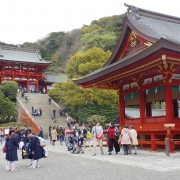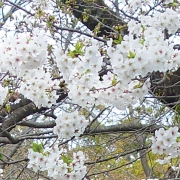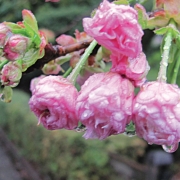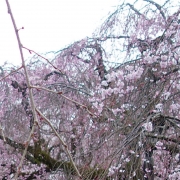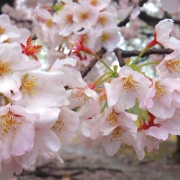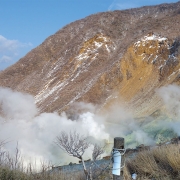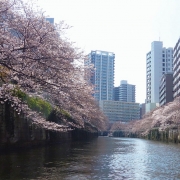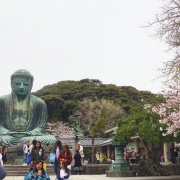
Etcetera
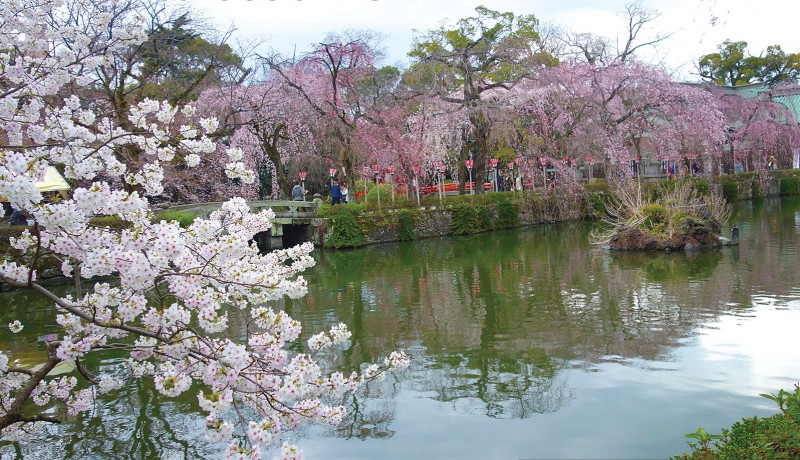
Canopies of pink perk up the Japanese skyline during the short-lived sakura season
Tokyo. Day 1: I was trying hard to overcome a tinge of consternation that threatened to dampen my ebullient mood. We were one of those quintessential tourists who flock to Japan to view the panorama of spring, when millions of cherry blossom trees—known as sakura—burst forth to break the bleak winter spell and bejewel the country in heavenly shades of pink.
Our stroll through Chidorigafuchi, on the northwest side of the Imperial Palace, one of Tokyo’s best cherry blossom viewing spots, however, revealed no such signs of the celebrated blooms. A network of bare branches stencilled the sky and chilly wind compelled us to pull our jackets closer. “A few days earlier, the weather was warmer,” said our long-standing friend Makoto Honjo. “But then we ran into a spell of unexpected rain.” He looked apprehensive. “Now the flowering will be delayed.”
Each year, when the blossoms arrive, Chidorigafuchi transforms miraculously, delighting sakura revellers to take boat rides on its ancient Edoperiod castle moat amid canopies of pink clouds created by flower-laden trees that bend low over the water. Elsewhere, exuberant crowds jostle for space to picnic under the cherry trees to celebrate Hanami—the flower-viewing tradition—first adopted in the 8th century Nara rule. By the Heian period, the Imperial Court at Kyoto had started inviting the elite to outdoor feasts under the blossoms. Later, under the samurai society of Tokugawa Shogunate, hundreds of cherry trees were planted for common people to enjoy.
Visitors like us have to be fortuitous to enjoy the glory of the blossoms, the season being as short-lived as it is breathtaking. As winter departs, millions of flower clusters hasten to unfold and reach peak bloom within a week. Even as they flourish, they carry the message of an inevitable end, as their dainty petals begin to fall after another week. In the event of strong wind and rain, the blooming period gets even shorter. Sakura season unravels across the archipelago, commencing with Okinawa in the south during January. Midregion Tokyo and Kyoto usually experience the blooming period end March or beginning April. Moving north, it can go on till May.
We had set aside two weeks to make our appointment with the blossoms and to track the flowering in Tokyo and the surrounding regions of Hakone, Izu Peninsula and Kamakura. Given the whimsical weather, the big question was: Would we succeed in our quest?
As a start, we visited the 7th century Sensoji Temple in Asakusa, one of Tokyo’s oldest neighbourhoods. Entering the Kaminarimon or Thunder Gate, we joined the throbbing activity on Nakamise-dori, a charming street with colourful shops overflowing with souvenirs, Japanese fans, chopsticks and kimonos. Street food stalls did brisk business serving local snacks such as yakitori, sushi, handmade noodles and sweet bean paste ningyoyaki cakes. Having paid obeisance to the temple deity Kannon, Goddess of Mercy, we emerged through the Hozomon or Treasure House Gate to discover our very own treasure: the first sighting of a weeping cherry blossom tree that set my trepidation to rest. Crowds gravitated under a cascading shower of flower-laden tree, phone cameras were whisked out and a feeling of shared joy prevailed. A pretty kimono-clad young girl happily posed with me for a photograph.
Weeping cherry trees or shidarezakura bloom earlier than someiyoshino or standard cherry blossoms. There are over a hundred sakura varieties in Japan, in a palette that ranges from pale blush or white to vivid pink. The flowers come out before the leaves and grow together in clutches. Most varieties bear five petals, but the late blooming ones may have several frilly layers. Besides period locales, sakura trees embellish many a street in Tokyo and offset its glittering high-rises. On an evening visit to the 54-storey slick commercial Mori Tower, the cynosure of Minato District, it was an unexpected delight to see a floodlit sakura tree in deep pink, lone and resplendent on the concourse. It was apparently a variety that had outpaced the others. Although the yellow chrysanthemum is the official flower as epitomised in the Imperial Seal, the Japanese highlight the much-cherished sakura with spotlights. Even more charming are paper lanterns strung amid the trees that flourish in parks and along river canals.
Next morning, our friend Makoto lined up an enthralling boat ride along the Meguro river that passes through Nakameguro, a residential district lined with sakura, making it a popular venue for Hanami. Our boat sped out of Tokyo Bay, leaving behind the futuristic skyline of towering buildings, flyovers and elevated monorail tracks, slowing down as it entered the river to take in the viewing. Flower-laden branches leaned over gracefully on both sides, creating a gorgeous panorama as we went under bridges and through river bends. In sunlit patches, the trees bloomed full, but those in shadow, still slightly bare.
Moving westwards to Hakone, a quaint mountainous town in the Fuji-Hakone-Izu National Park, we were greeted by melting snow outside our hotel. Being too cold for the blossoms, no shattered expectations here. We concentrated on a tourist cruise on Lake Ashi. On the edge of the lake is the picturesque red torii—traditional Japanese gate—of Hakone Shrine, a familiar icon on tourism posters. Hikes, museums and art galleries apart, hot springs in this area are unique. Several resorts boast of onsen or baths in the curative waters that result from volcanic activity. The highlight of our trip was Owakudani or Great Boiling Valley, at 1,044 m, where crater vents spew out acrid smoke. Eggs boiled and blackened by the sulphuric pools of steaming water here supposedly increase longevity. It was perceptibly warmer as we arrived at the small onsen town of Izu Nagaoka, in the northern part of the peninsula. A luxuriant sakura tree welcomed us at the entrance of Kamaya Ean, a traditional inn. Stepping into slippers and donning yukata (a casual kimono) hanging fresh in the cupboard, sleeping on a straw mat in a Zen-like room, steam baths in the onsen at night, gazing at cherry blossoms from our window while sipping green tea in the morning… it was a taste of Japanese-style living.
We forayed south to the town of Kawazu, content to photograph a billboard showing Kawazuzakura, a dark pink early variety that blooms mid-February. Being a rainy day, it was not possible to visit Joren Falls at the head of a nearby forest trail that goes through Nanadaru, a series of seven waterfalls. Nonetheless, a scenic bus ride via the amazing spiral of Nanadaru Loop Bridge that spans two high mountains made the trip worthwhile. Going west to Atami, a lively seaside resort, we strolled down the sandy beach, taking the ropeway up a mountain at the other end to visit a reconstructed Edo-style castle, now an entertainment centre. Viewing the Pacific Ocean bay from this height, through swaying branches of cherry blossoms, was an extraordinary sight.
Closer to our hotel, we visited Shuzenji, where charming red bridges span the river as it ripples through the old town. At its famous Hie Shrine near the historic Tokkono-yu onsen stood a sakura making its bow at the entrance. But by far the most magnificent encounter with the blossoms was at Mishima-Taisha shrine that honours the god of the Fuji volcanic belt in the city of Mishima, gateway to Izu. A path decked with cherry blossoms, food stalls and pink paper lamps for celebratory Hanami led to the inner shrine. After watching a prayer ceremony, we entered the gardens, spellbound by the heavenly spectacle of over 200 cherry blossom varieties in varying stages of bloom.
There were many more celestial gardens to admire when we visited Kamakura, just an hour’s train ride south of Tokyo. Here flourished the seat of military government from 1192 for over a century and its first shogun Minamoto Yoritomo founded the most significant shrine, Tsurgaoka Hachimangu. Taking a walk through bustling Komachidori shopping street, we stopped to enjoy a meal of udon noodles and tempura. The shrine is a massive complex with a main hall that sits on a terrace approached by a wide stairway. Walking through its gardens with ponds surrounded by blossoming trees, we stepped outside for another fiesta. Hundreds of blooming cherry blossoms stood tall on either side of the pedestrian path that approached the shrine. Clearly, we had kept our appointment with the sakura.
Next morning we headed to Hokokuji, a Zen temple, whose garden spelt serenity with a tea-house, bamboo grove and trees sculpted in niwaki (Japanese pruning) style. My dream was better fulfilled as we walked through an ethereal passage of blossoms to Jomyoji bus stop, the branches above interlocking in divine romance. Unfortunately, there was no time to tarry, as we had to take a train to Hase, a few stops from Kamakura. We first visited Hase-dera, a temple of the Jodo sect, and admired the 9.18-m, 11-headed gilded statue of the goddess Kannon. An expansive sakura tree outside the main hall enhanced the ancient architecture of layered roofs. Built along a hill, the temple offers lovely views, with a heavenly setting of gardens below filled with flowering bushes and cherry blossoms amid stone lamps, ponds and bridges. We made it in time to Kotoku-in Temple to see the famed Great Buddha of Kamakura. This 11.4 m bronze statue of Amida Buddha cast in 1252 sits in calm repose against a setting of hills, regardless of the milling camera-clicking crowds. What better luck than to photograph the Buddha and the blossoms together in the glow of the setting sun!
Back in Tokyo for our last weekend, undeterred by a light drizzle, we walked along Kanda River soaking in the splendour of peak bloom. We took a metro to Shinjuku Gyoen. Spread over 58 hectare, this historic park has over 1,500 cherry trees of different varieties. Umbrellas in hand, we traversed vast spaces edged with ancient trees, branches kissing the ground, brown earth carpeted with pink petals that fell as softly as the rain. We strolled to the Japanese traditional garden—there are French and English gardens as well—taking in the serene setting.
Next day, it was our plan to visit Ueno Park, another popular Hanami spot, but the drizzle had become a relentless downpour. Instead, we browsed in the department stores of posh Ginza street, lunching on buckwheat soba noodles and tasting Japanese tea accompanied by sakura-shaped delicacies at a contemporary cha-bar.
Day 14: During our stay, we often got to hear a Japanese folk song that dates to the Meiji period. It haunted me as we rode the airport limousine. The song goes: Sakura, sakura, noyamamosatomo, mi-watasukagiri, kasumikakumoka, asahininiou (Cherry blossoms in fields, mountains and villages, is it mist, or clouds? Fragrant in the morning sun.) Looking out for a last glimpse, I noticed that some leafy greens had started shooting up after the downpour and the flowers were a tad jaded. It would not be too long for the entire panorama of pink to be gagged by the foliage.
Indeed, the show goes on; the blossoms will come year after year, to adorn the country and its shrines, castles, rivers and parks. I was leaving happy in spirit, with a resolve to return—same season, another region, to see the magic unfold in this Land of the Rising Sun.
FACTFILE
When to go
For first-time visitors, it would be best to visit Tokyo and Kyoto, the most popular tourist destinations, towards late March and early to mid-April when cherry blossoms usually bloom. If visiting other regions, follow blossom forecasts for sakura sighting.
Visa & currency requirement
A Japanese tourist visa is required. The Japanese Yen is a strong currency and the third most traded currency in the world after the US dollar and the Euro. (1 JP¥: 0.58 INR)
Tips
Hotels are expensive. For better rates, book in advance. Ryokan or Japanese inns can be even more expensive, but are well worth the experience.
Eating out comes in a range of prices. Meals in any of Japan’s swish five-star hotels, including live teppanyaki preparations, are in the super-luxury price range. On the other hand, there are plenty of local restaurants in the lanes and streets that are more reasonably priced. Worth a try are mid-range izakaya bars—gastro pubs where you drink and have informal meals. Dishes may range from 200 to 600 yen, and drinks will cost between 250 and 500 yen. For lunch, several restaurants offer reasonable, three-course set menus hovering around 1,000 yen. For meals on the go, there are the ever popular ‘Bento boxes’ available at stations, convenience stores and supermarkets for as little as under 400 Yen. Prices in the countryside are lower than in Tokyo.
Tokyo has an intricate metro system with 13 lines. Most staff at the turnstiles can speak English. The super-fast Shinkansen bullet train, though pricey, connects Tokyo to most parts of the country. Regular trains run by other private rail operators are more economical.
Text & Photos: Rekha Sarin Featured in Harmony — Celebrate Age Magazine February 2018
you may also like to read
-
Cracking the longevity code
Small yet impactful choices can be game-changers, writes Srirekha Pillai At 102, there’s no stopping Chandigarh-based Man Kaur, the world’s….
-
Home, not alone
While a regulatory framework is vital for senior-care facilities, the need of the hour is to develop an ecosystem to….
-
Birthday Girl
Published in a special edition to honour Japanese master storyteller Haruki Murakami’s 70th birthday, Birthday Girl (Penguin; Rs 100; 42….
-
A huge treat for music lovers
Published as the revised and updated second edition, Incomparable Sachin Dev Burman (Blue Pencil; Rs. 599; 470 pages) the authoritative….



